Title 1 | home
Title 1
Hudson Family Tree
James Hudson March 1724-October 1798 ) Married at Ash, Kent
Lydia Holms September 1736-October 1824 ) on January 23rd, 1757
John Bap 13.4.1757 to 10.4.1835 Married May who died 5.3.1835
Both 78 years old
Sarah Bap 22.10.1758
Mary Bap 3.8.1760 Married Daniel Read 27.12.1794
James Bap 27.12.1761
Elizabeth Bap 28.7.1763 Married Steed 18.7.1786
William Bap 29.9.1765
Henry Bap 1.3.1767 Married Elizabeth Buck 13.4.1793
Jeffery Bap 4.12.1768 Died 30.6.1833
Ann Bap 19.8.1770 Died 3.10.1838
Married John Redman on 15.5.1792
Son William 27.2.1793
Thomas Bap 19.7.1772 Died 11.9.1793
Zechariah Bap 26.3.1775 Died 19.8.1858
Married Branford 16.5.1796
Zechariah 26.3.1775 to 19.8.1858 ) Married at Ash, Kent
Hannah Branford 16.4.1772 to 23.12.1837 ) on May 16th, 1796
Jeffery Birth 13.7.1795 Bap 17.8.1796 Died 23.1.1818
Henry Birth 10.12.1797 Bap 31.12.1797 Died 6.6.1887
George Birth 27.10.1799 Bap 19.11.1799 Died 21.12.1854
Charles Birth 13.8.1801 Bap 4.11.1801 Died 16.10.1883
Married Kelsey 1.2.1831
Mary Birth 23.10.1803 Bap 15.11.1803
Hannah Birth 3.2.1805 Bap 12.3.1805
Zechariah Birth 13.12.1806 Bap 25.2.1807 Died 13.9.1868
James Birth 22.9.1808 Bap 27.11.1808 Died 16.4.1859
William Birth 24.8.1810 Bap 15.10.1810
Married Goddard 8.2.1827
James Hudson 1808-1889
Eliza
Ellen Ann 1843
Charles James 1846 Married Woodruff Died 1913
Herbert
Adia
Eliza
Charles James Hudson 1846-1913 ) Married at Congregational Church
Jane Elizabeth Woodruff ) Ramsgate 1871
Howard Charles June 1872
Wilfred Philip 1875 Married Drayson Died 1955
Christine Bessie 1878 Married Savory on 11.10.1903
Wilfred Philip Hudson 1875-1955 ) Married in 1900
Edith May Drayson 1872-1970 )
Kenneth Charles 1903 Married Dean in 1929
Eileen Mary 1900
Margaret Elizabeth 1908-1981
Christine Bessie Hudson ) Married 11~10.1903
Horace Savory )
Philip Neville 1904 Married Stag
John Barwick 1908
Janet 1914
Kenneth Charles Hudson ) Married 1929
Mary Isobel Dean )
John Wilfred 1933-1936
Tersa Mary 1939 Married Mack in 1962
Rosalind Elizabeth 1943 Married Peters in 1965
This ends the Hudsons reign in Flour Milling. During my research, many Hudsons were discovered, but I have dealt only with the milling side who finished up at the Mill on the hill at Ramsgate, Kent.
This story starts back in the good old days of the 1700's, when the Hudson family were on the records as millers of flour. At the time, they little visualised that in 1984, although the name of Hudson has disappeared from the head of their last mill, their spirit and their name, marches on. I came into flour milling in 1949 under the Hudson banner, when C.J. Hudson Ltd. decided to have a re-model as far as their money would allow. Most of the machines in the actual mill were of early 1900 vintage, and could no way cater for the future needs of the family. Henry Simon Ltd., milling engineers of Stockport, were asked to plan for a modern mill with 95% ready built (R.B.) elevators and conveyors. When Henry Simon started in 1949, I left a joiners bench and started work as a spout hand, a very skilled and extremely interesting trade, which today has disappeared, having given way to the unsightly metal spouting.
Now, before all is forgotten or sunk without trace, I put pen to paper to try to let people know about the life and history of the Hudson family, and that there have been other names in milling, besides the Ranks, Spillers and Westons. I have managed to go back to 1724, when in March of that year, a young male was born, later to become the well known James Hudson of that time. As a young man, he took on a windmill at Ringleton near Ash in South East Kent. But this was later moved for some reason to Ash. With the help of his dear wife Lydia, who he married on January 23rd 1757, he produced flour from his stones. His stones were some of the largest in this area. He and Lydia had a large family of eleven children and it was to his last son, Zechariah, that he gave the mill late in 1790. He also set his third son, William, up in a mill just a stone's throw away, known as the Sand Pit Mill, standing on ground at the rear of the Lion Hotel, Ash.
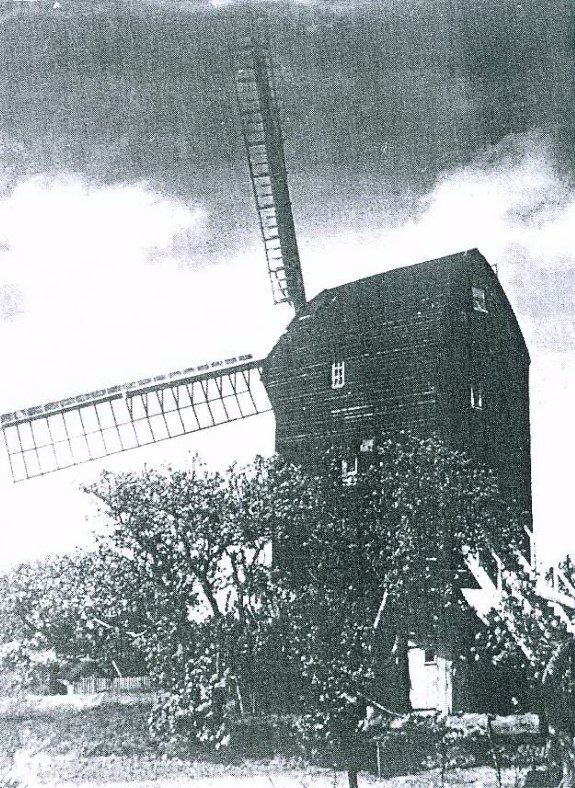
As can be seen in this photo, Mount Ephraim Mill was a very attractive mill in a real country setting. Kenneth Hudson did his best with the Rural District Council to keep this mill in a good condition, but in 1954 it went the way of so many of its predecessors, for in a gale force wind, it toppled over and was destroyed. Yet another little bit of old England had been wiped from the map.
And so, in the late 1700s, the Hudson milling family started off with two mills, with a combined output of fifteen sacks of flour per week, not forgetting that a sack was 280 pounds in weight. A miller's job in bygone days was no eight to five job, forty hours a week. A miller depended upon the wind, and if in the early hours of the night or morning the wind started to blow, then up the miller had to get and run his mill, for tomorrow there may not be any wind. Between them, Zechariah and William employed one general duties man. His job was to hump the sacks of wheat, bag off and weigh the flour, look after the horse and cart, deliver flour and keep the place clean. If one brother needed help, he would put his smock on the mill sails and within ten minutes help would be at hand.
At today's rate of milling, fifteen sacks per week does not sound very much, but it must be pointed out that there were over 400 windmills in Kent alone at one time, and people were thin on the ground. It even happened that every so often the mills of East Kent built up quite a surplus of flour and the hired hands would have to load it onto the carts and transport it to the port of Sandwich, where it would be loaded onto barges or small coasters and shipped to London to be sold. Sandwich has never changed a lot since those days. The roads are still narrow. There is a cobbled market area, now used as a car park. The old toll bridge and gate are still there over the River Stour, which today is used for pleasure by yachts and motor boats. To try to save Sandwich a by-pass has been built around the town.
Zechariah married Hannah Blanford on May 16th, 1796 and like James and Lydia, they had a large family. Several sons went into milling, and although I will deal briefly with other members of the family, I am mainly concerned with the side of the family who finished up at the mill on the hill at Ramsgate.
Zechariah set James, his sixth son, up in a mill at Birchington, Kent. This was believed to be a mill belonging to the Griggs family, who were millers there in 1666. But because of all the hard work put into the history of Birchington, I would like to leave this until later. I would like to mention that when it was suggested that I write the history of the Hudson family, I sat down and did it all in two evenings. It was then that I decided to look deeper into things and so have spent two years of searching, letter writing and study. At times I was so frustrated that I was ready to give it all up, especially when my information differed from books written by experts. But I carried on, and proved them wrong and have now finished my study into the past. The greatest triumph of all came when I obtained a photo of the old Birchington Mill, which everyone said I would never get. This photo can be seen on a later page. It is, in fact, a photo of a sketch, taken between 1870-80.
Henry, second son of Zechariah and born in December 1797, came to Ramsgate and did very well for himself, finishing with three windmills. He had one at Northwood, Ramsgate known and listed as Thanet Mill, and in 1864 he enlarged on this by having a two- storey house built with stables nearby. The house still stands today, and must be worth many times its original cost, which was a mere £299 10s. 0d. Thanet Mill was a brick built smock mill and after the middle 1800's it became known as the `Coffee Pot' mill. This was owing to its shape after alterations.
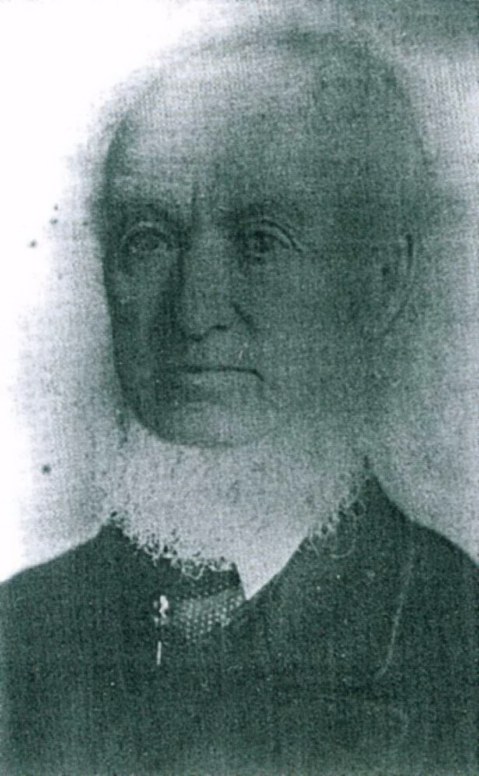
James Hudson 1808-1889
In the middle 1800's, it was decided to build a railway from Ramsgate to Chatham and London. The route left the station where Chatham Court Flats now stand, and went over Whitehall Road and out past Jacky Bakers Playing Fields, where there was a level crossing. From here, a cutting was dug out and the chalk piled up on top of the banks. About two hundred yards away was the Northwood Mill and when the southerly winds blew, Henry had no wind to turn his sails as it was deflected by the piled up chalk, and went over the top of his mill. Legal proceedings were started but Henry just couldn't wait, so had the mill extended upwards for the cost of £400. So that the same cap and sail would do, he had the extra storey built on vertically instead of in line with the present sides of the mill, and it was this that gave the mill the look of a coffee pot.
Legal proceedings went on from 1845 to 1848 when Henry won the day. Compensation was awarded to Henry for the huge amount of £100, all costs being paid by the railway and the chalk levelled off, though still higher than the surrounding farmland. In 1960/61, Taylor Woodrow built a large bungalow estate on the farmland and today it can be seen that some bungalows are about four feet above the road level, the owners no doubt wondering why. The old mill was pulled down but as already stated, the house remains. A member of the present mill used to work at this windmill when it was steam driven. He was Bill Williams. He started work at Ramsgate as a stoneman in 1927 and stayed to complete forty-two years service. He died on 10.4.84. He was a life long member of the Salvation Army band, and played until he could play no more. He loved his band, and when I went to visit him shortly before he died, he kept on talking about `his' band.
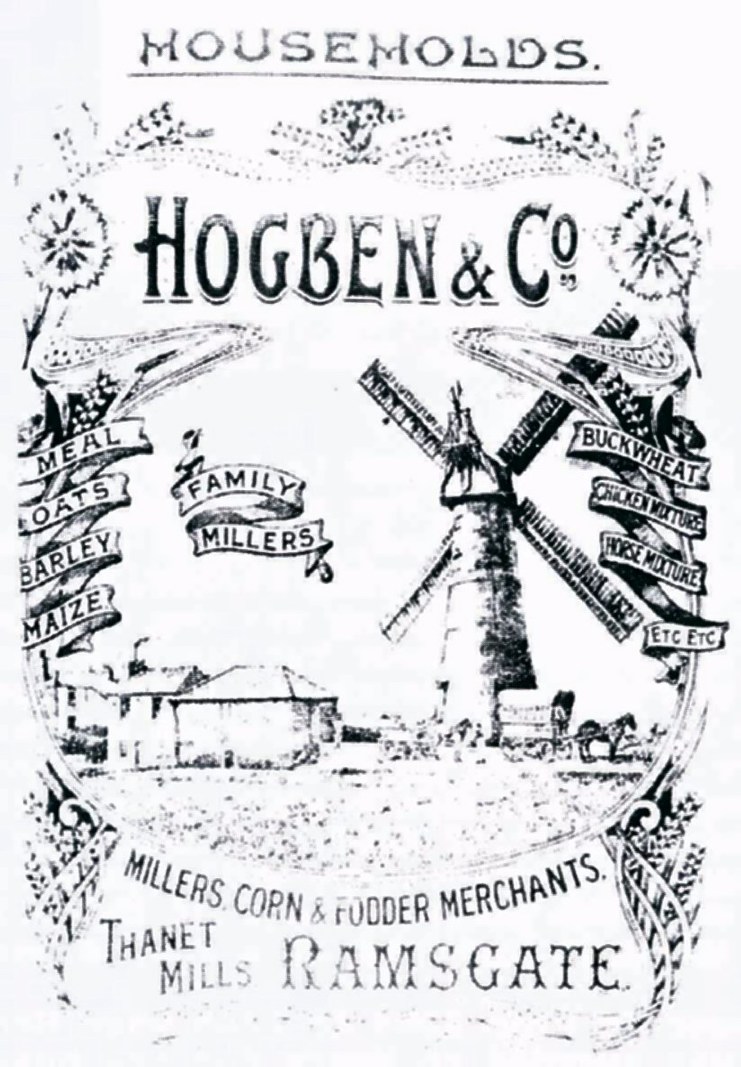
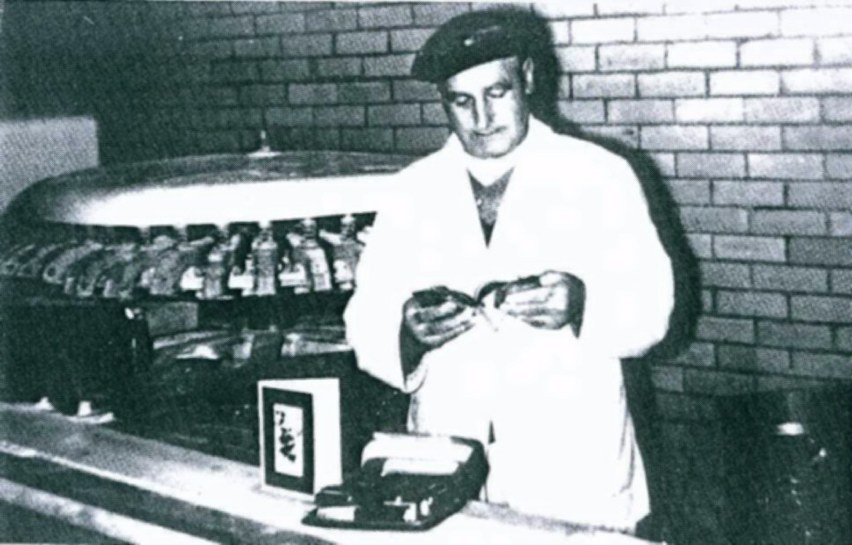
`Daddy' Williams after 42 years service with C.J. Hudson Ltd., Ramsgate. Photo taken while he was in charge of pre-pack plant.
Sack design from Northwood Mill. Note shape of mill
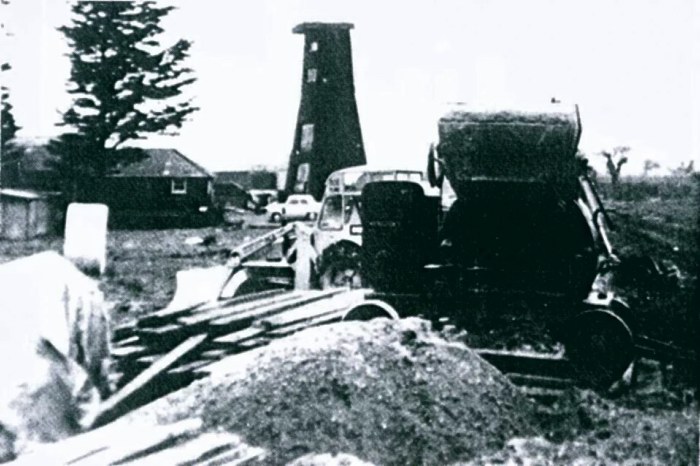
Photo taken in 1961 when bungalows were being built.
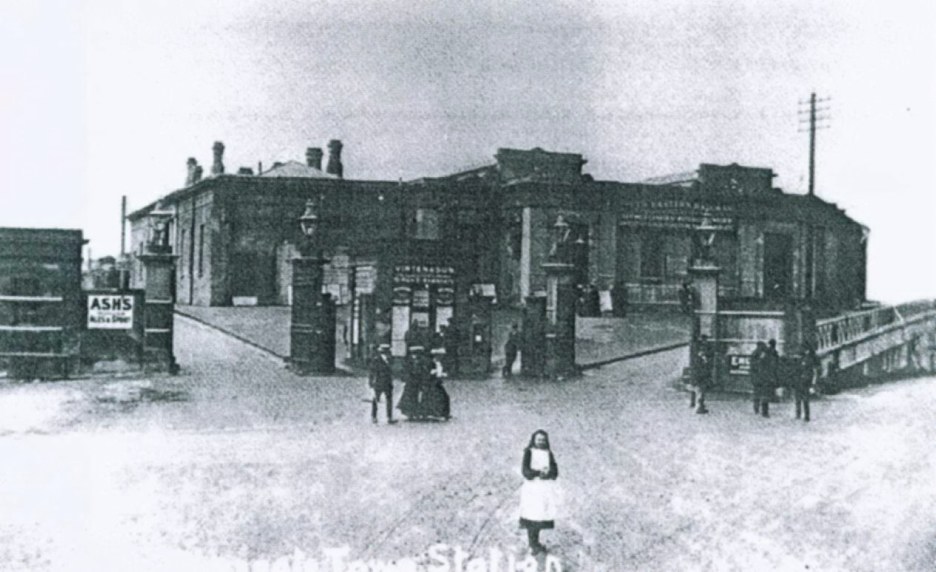
Ramsgate Town Station, above the Ramsgate Mill.
Photo taken in early 1900's
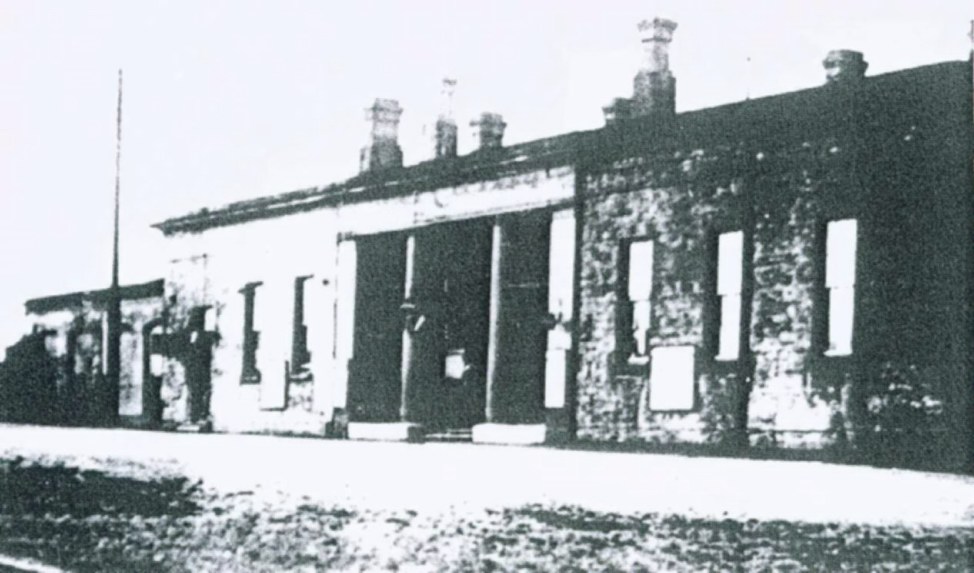
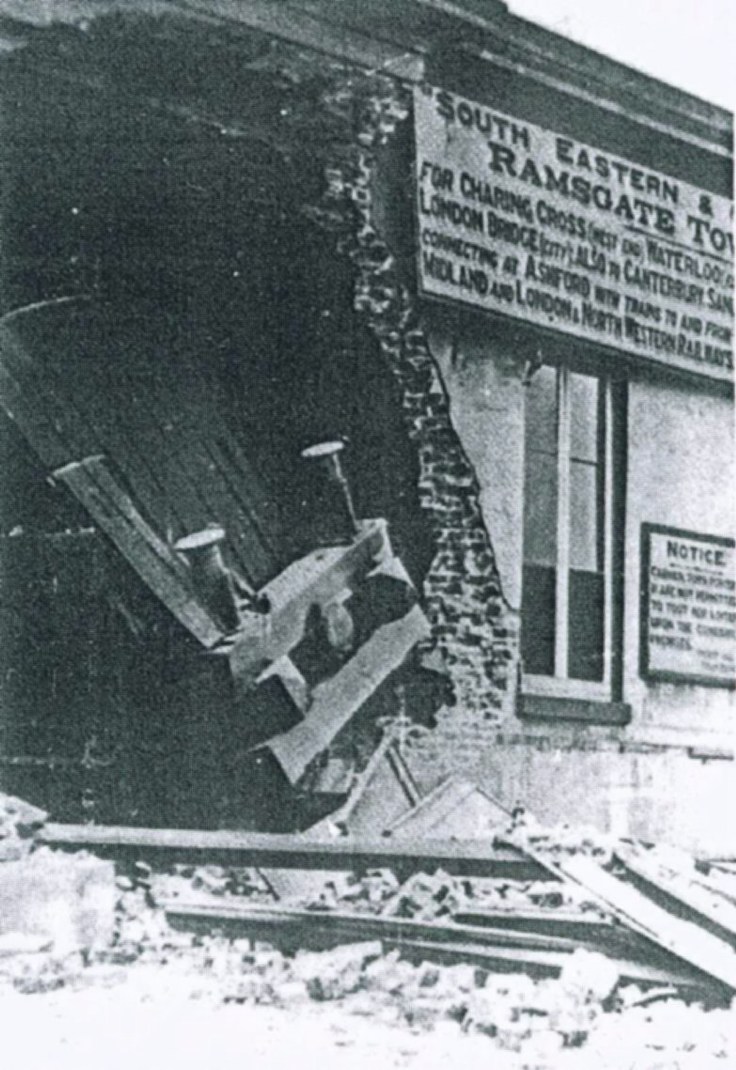 Front entrance of Ramsgate Station. The local tram depot was to the left of photo.
Front entrance of Ramsgate Station. The local tram depot was to the left of photo.Goods wagon and buffers through end of
Station platform.
Henry went into partnership with the owner of the Grange Road Mill, known and listed as the Ramsgate Mill, and it now became theHudson & Parkin Mill. When Henry's son grew up, William joined his father, Parkin moved out, and the mills came under Henry and Son. This mill used to be on the East Cliff and was on a print of Ramsgate in 1799. It was built by Messrs. Marshall & Joad, Corn Factors, and was fitted with all the latest improvements of that time. Its cost was £800.
For the first load of wheat, purchased from Mr. Blackburn of St. Peters, they paid 120 guineas, but as this price left so little margin for profit on the manufacture of flour, they pulled the mill down piece by piece and moved it to Grange Road on the West Cliff where two other windmills of a very old and primitive construction stood, they being a post and stump mill. In a map of 1823 the three mills are shown. One was the above. The second stood where West Cliff Road is, and the third was the same distance down the road. By 1847 only Henry's mill remained.
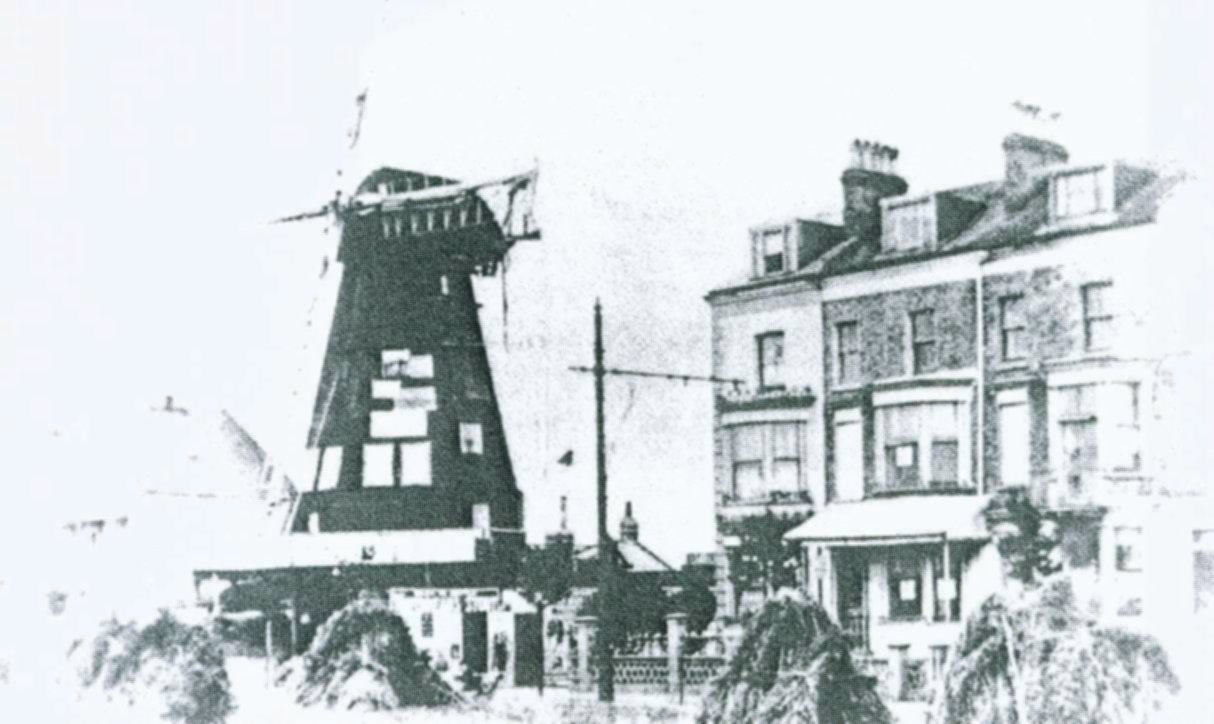
Henry's mill in Grange Road, Ramsgate.
Notice the corn fields in the foreground.
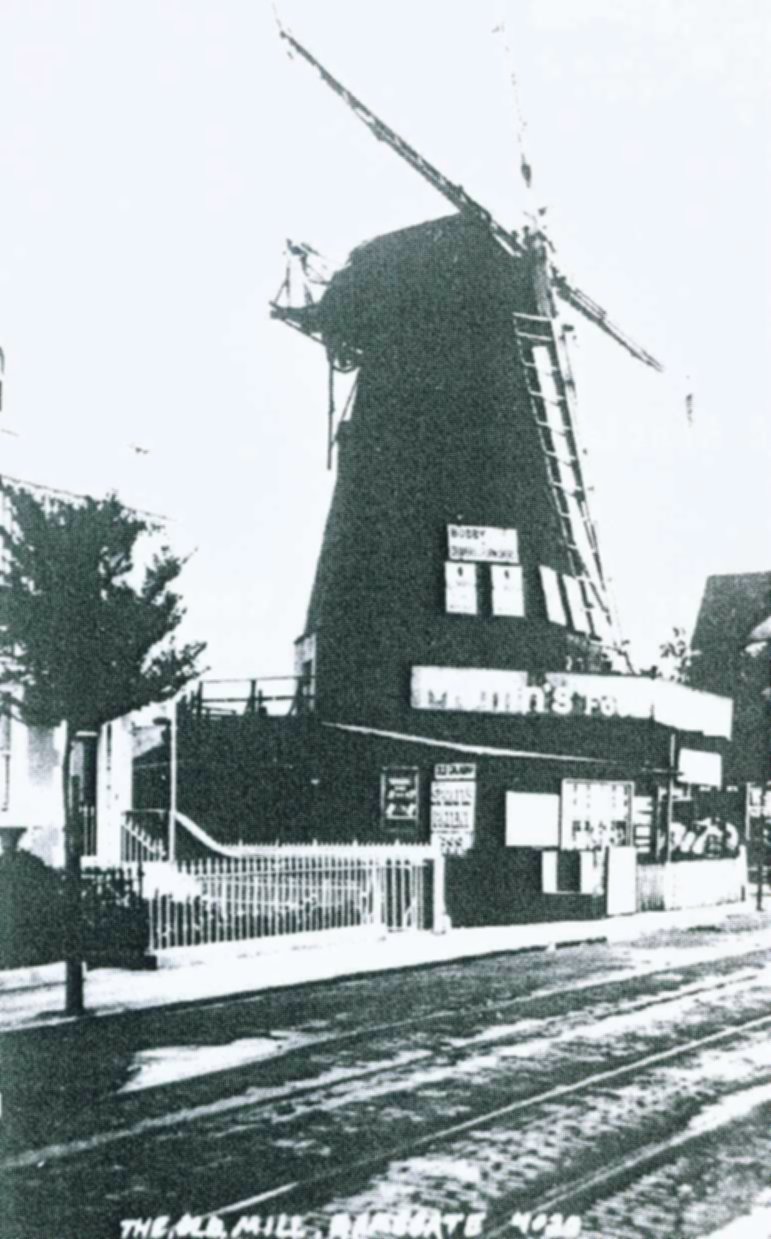
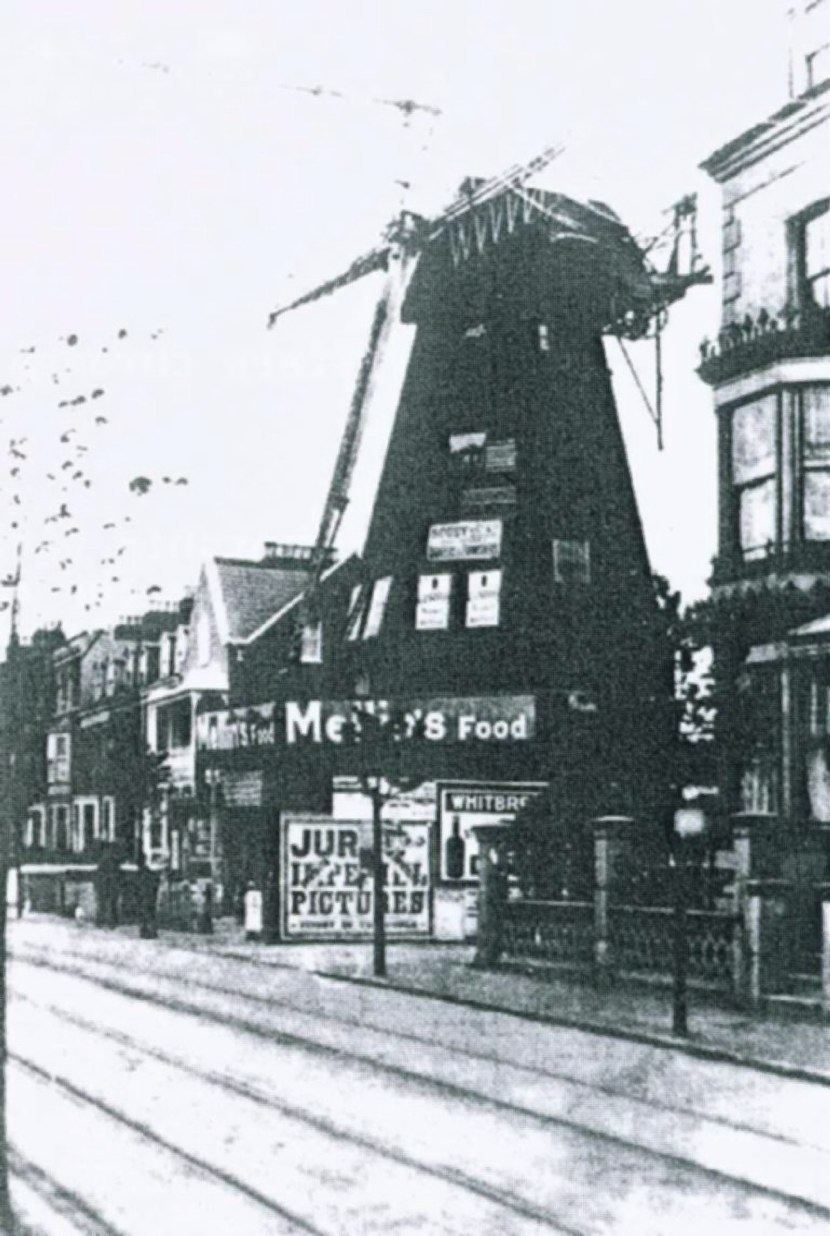
Henry's Mill Grange Road, Ramsgate
Ramsgate Mill was of seven storeys and was a land mark for passing ships, being shown on maritime maps. It stood out so well on top of the western cliffs of Ramsgate. On January 12th, 1889, William Hudson sold the mill to Messrs. English Bros. The mill by this time had a steam engine, the entrance to this and the cottage where William had lived being in Cannonbury Road. English Bros. in turn sold this mill to Messrs. Norman & Company, who were the last millers to have it. In 1900 the sails were removed and the stones were shipped to India for the milling of rice. The mill was then sold to Scotts Motors who used it as a garage. A couple of years later, the mill was hit by a violent storm and badly damaged. The cap and four floors were removed. After a few more years it became a greengrocers, but then in 1937/38 it was completely removed and Grummant Bros., builders of Ramsgate, built a modern block of three shops with accommodation over the top.